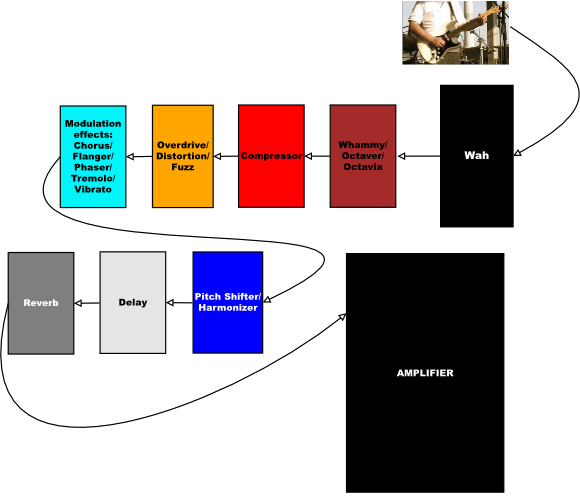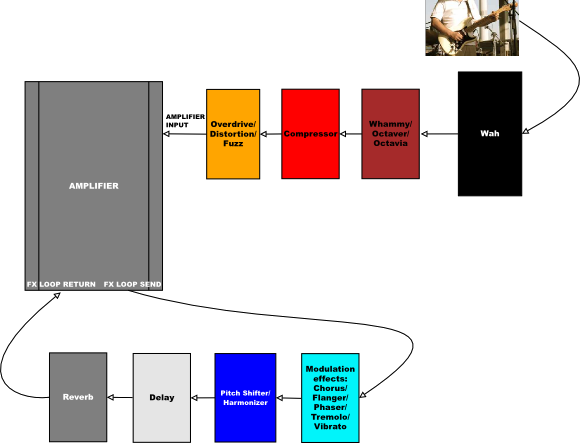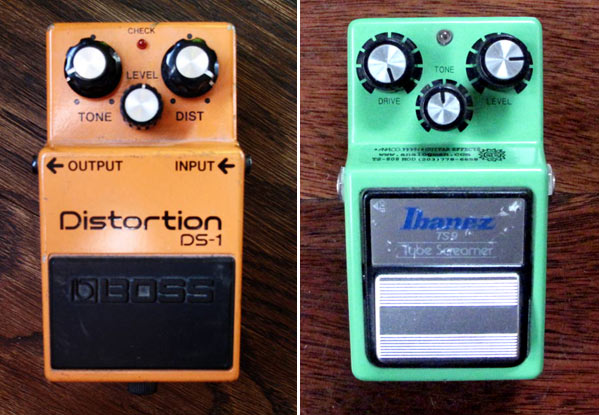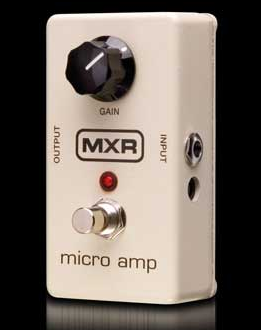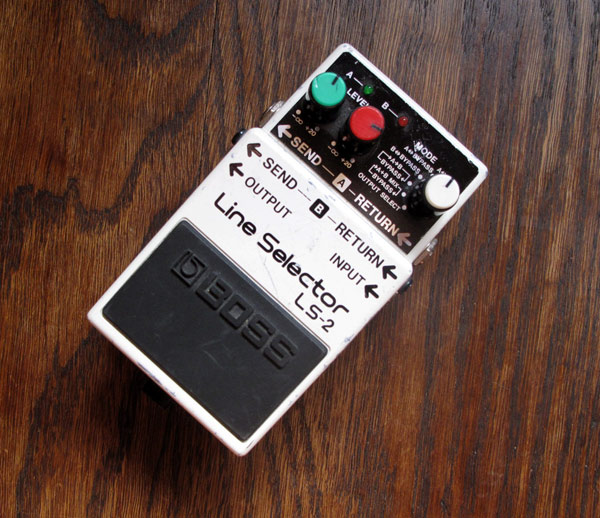This post is part of my “Effects FAQ” series explaining guitar effects basics. A very common question is: “where should I plug my pedals in the effect chain?”.
So I have put on schematics what is thought to be the most optimal guitar effect order for most styles to avoid for instance, plugging a reverb before a distortion which produces a very mushy sound. And so it goes for most effect combinations.
A word of advice on this though: often in music, rules are meant to be broken and experimenting to find your tone is highly recommended!
Case 1: All your effects are plugged before an amp that has no “Effects Loop”
The first case is where you run all your pedals before the input of your amplifier i.e. your amplifier has no Effects Loop or you are not using it. The amp would be presumably set quite clean. You don’t want to run a delay or a reverb in front of an overdriven amp as this can sound quite mushy. Click on the image to see a larger version.
Remarks:
- You could argue that the Whammy is a pitch shifter but there are two types of pitch shifters and each type might work better in different places in the chain. You could place a Whammy after your distortion but the “tracking” is usually better before. More sophisticated digital pitch shifters/harmonizers like the Eventide kind sound better after a distortion/overdrive (think Brian May of Queen).
- Modulation effects like chorus or flanger can be placed before a distortion but the sound will be quite different from when they are placed after. As I said, just experiment!
Case 2: if you own an amplifier equipped with an Effects Loop (a.k.a. FX Loop)
Some effects like delay or reverb sound clearer if they are placed after a distortion/overdrive. In order to use these effects after the natural overdrive of your amp, the amplifier gods created the effects loop. It translates into an “FX LOOP SEND” connector that goes into the “INPUT” of your effect and an “FX LOOP RETURN” connector that goes to the “OUTPUT” of your effect. Here is how it goes:
Remarks:
The loop is placed in between the two main parts of any amp: the preamp and the power section. Most modern amps get their natural overdrive from the preamp and then the signal goes through the effects loop and is amplified quite cleanly by the power section. Cleanly means that effects like delays and reverb stay “clear”.
This is different from earlier amps which had no master volume let alone effect loops (think old tube Marshall, Fender and VOX amps). With these or their reissues still sold today, in order to get any distortion, you have to crank the volume to make both the preamp and the power section saturate. This is sometimes referred to as “power tube saturation”. Some guitarists like Eric Clapton or Jeff Beck love power tube saturation which explains why they still tend to use older amps that they crank.
To add some “crystal clear” reverb or delay to “power tube saturation”, you can put a microphone in front of the amp and add the effects to the signal picked up by said microphone. Or you can use a power attenuator like the THD Hotplate which can absorb the power of an amp and turn most of it into heat as well as provide a “line level” signal. This can then be used with effects before it has to be re-amplified. Not as easy as an amp with an effects loop or the use of pedals in front of a clean amp! But some guitarists really want the tone provided by “power tube saturation”.

